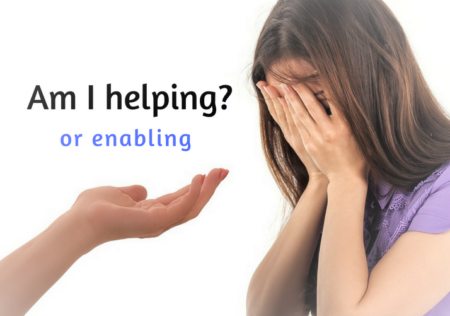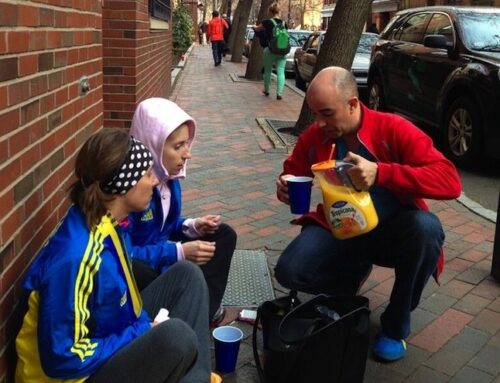How to Help Without Enabling: 5 Key Steps
April 18, 2018
Categories: Helping
A common dilemma in life is how to help without enabling. Here’s what I mean: It’s natural to want to help others who are in need. We all need help sometimes, and it’s important to use our time, money, and resources to help people who are struggling. Also, if you identify as a Christian, this is a big part of what Jesus was about—helping the “least of these.”
Helping Can Turn into Enabling
On the other hand, helping can sometimes turn into enabling. What I mean is that if you help too much, you can allow another person to not take responsibility for what they should be responsible for. They could take advantage of you. Also, helping too much can hurt the growth and development of the person you are trying to help. They might need to step up and take responsibility for some aspect of their life, even if it is difficult and painful.
5 Keys to Help without Enabling
How do we find the balance? Here are 5 keys for how to help without enabling:
- Recognize your capacity. It’s important to be honest and recognize your capacity for helping. We all have limits in the amount of time, money, and resources we are able to give. If the need is so great that you are taking a hit in your physical or emotional health, you probably have reached your capacity. Once this happens, it’s a good idea to reduce your level of helping until you are at a better place of balance in your life. Make sure you put your oxygen mask on first before helping your neighbor.
- Evaluate the capacity of the other person. This step is a bit trickier. Sometimes people do need a higher level of help and care. For example, some individuals with physical or mental disabilities, or individuals who have severe mental health problems, need a lot of help. Also, someone might be going through an extremely difficult time right now, and need a higher level of help and care to get through their crisis. On the other hand, there are other people who have the capacity to take care of themselves, but for whatever reason just aren’t doing it. Making a good decision about what level to help involves an accurate assessment of the other person’s capacity to take care of themselves.
- Put people on a growth trajectory. Ideally, the people you help would be on a growth trajectory and take increasing levels of responsibility for their own lives. For example, maybe someone needs a higher level of help and care for the first month, but then for month #2, your level of help would decrease as they begin to take more responsibility for their own lives. If a person is capable of taking responsibility for themselves, don’t help them indefinitely—put them on a growth trajectory so they can take care of themselves.
- Get an outside opinion. Sometimes the line between helping and enabling can be tough to spot. This is especially true if you are trying to figure out what to do about a close relationship (e.g., spouse, child, close friend). It can be helpful to get a second opinion. Ask a trusted friend what they think about your situation. Go to counseling to get the opinion of a professional. You don’t have to make these decisions alone.
- Deal with the pain of letting someone go. Some people refuse to take responsibility for their own lives, even if they are able to do so. This can be devastating to watch from the outside, especially if someone we love is wrecking their lives (e.g., engaging in drug or alcohol abuse). The pull to take care of the person or save the person can be incredibly strong. No one wants to see their family member or friend homeless in the streets. But we can’t control another person’s actions. We can’t take full responsibility for another person’s life. This is enabling, and it doesn’t lead anywhere good. Sometimes we have to let a person we love go, and deal with the pain that comes from that.
Discussion: What do you think about the idea of helping but not enabling? How have you struggled with this tension in your own life? Where do you draw the line?

Related Thoughts

Subscribe To My Newsletter
Join my mailing list to receive the latest blog posts.
Receive my e-book “The Mental Health Toolkit” for free when you subscribe.



